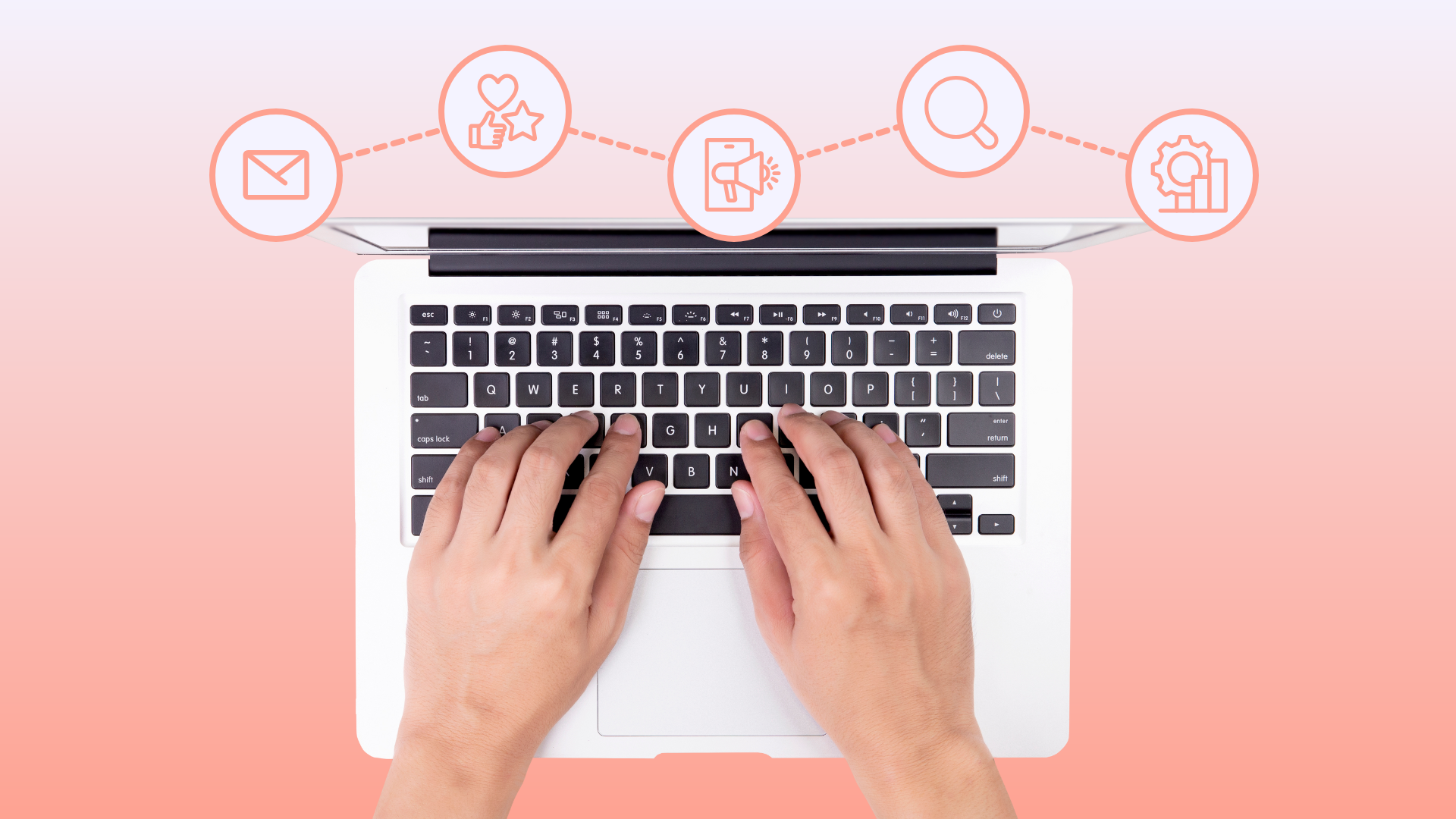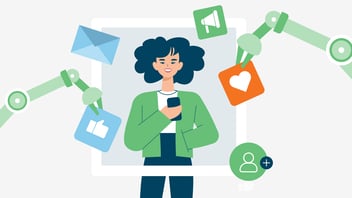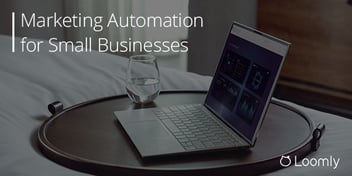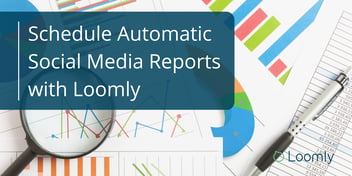Many marketers and business owners are intimidated by automation. It can seem complicated and expensive – and if you’re using the wrong systems, it can be.
The solution is focusing on high-impact, low-complexity tasks that can streamline key processes and ideally reduce human manual error for the most significant productivity boost possible.
This guide breaks down 12 essential marketing automation tasks into four categories:
- Quick wins: Tasks you can set up in two hours or less
- Revenue drivers: Tasks that can directly improve your sales
- Workflow power-ups: Tasks that streamline your operations
- Loyalty builders: Tasks that turn customers into advocates
Each category is designed to give you maximum impact with minimal setup time. Start with the category that addresses your biggest pain point right now.
Quick wins: 2-hour automations that make a difference
These three automations are a great place to start. They’re quick to set up and hard to mess up, and they lay the foundation for your next tier of automations.
1. Welcome email sequence
New subscribers are most engaged in their first week, and a good welcome sequence converts them while they're hot. Create a series of emails that greets them, delivers a resource, and begins nurturing a relationship, and send each on an automated schedule.
Tool needed: Any email marketing platform with automation features
Set up steps:
- Draft the individual emails in your email marketing software, ideally including a welcome email, a resource delivery email, and a first-week check-in email.
- Make sure your emails have an introduction, how-to resources, and next steps that your audience can take.
- Add the campaigns to a sequence.
- Set the timing to immediately start the sequence, with users subscribing to your email as the trigger.
- Set the following emails to go out on Day 2 and then Day 6, or your desired timeline based on your customer journey.
- Key tip: Write all three emails at once for a consistent voice, and keep in mind that you can write distinct sequences for each audience segment you’re targeting based on their sign-up method.
2. Social media scheduling
Consistent posting is crucial to stay on your target audience’s radar, but daily manual posting is a huge time suck. Instead, batch create content and schedule it to automatically post on your desired schedule. It seems small, but this automation will keep you off the social apps for long stretches of time — a key to deep creative work.

Tool needed: A social media management platform like Loomly
Set up steps:
- Create labels according to different different content buckets, such as “promotional,” “educational,” or “engagement.”
- Generate content and organize label it accordingly. We recommend batch creating one month’s worth of content at a time for efficiency.
- Set core posting times, posting at least three times a week at minimum.
- Schedule the content in your social media management software to auto-publish at the right time on each platform.
Key tip: Leverage Loomly’s post ideas and peak time suggestions to generate new content quickly and schedule your categories at optimal times.
3. Interaction management
Quick response times boost engagement, but monitoring comments and DMs 24/7 isn't realistic. Save your team time by having canned (but customizable!) responses for commonly-asked questions or engagement types, allowing them to respond to customer interactions faster.

Tool needed: Social media management platform with a saved replies feature, like Loomly
Set up steps:
- Identify the top 12 questions that users ask you, such as pricing questions, hours of availability, or general support needs.
- Create saved replies for each that answers each question directly.
- Set up a team member tagging system, like “@support” for technical issues or “@sales” for pricing.
- Create a simple decision tree for the team to help them to decide which replies to use when, and when the issue may need to be escalated.
Key tip: Keep your responses conversational and include placeholders for personalization, but make sure that your team knows to customize the messages as needed!
Revenue drivers: Automations that drive sales
These three automations directly impact your bottom line by capturing sales opportunities that often slip through the cracks. They take a bit more setup time than our quick wins, but the ROI makes them worth the effort.
4. Abandoned cart recovery
Cart abandonment is a huge revenue leak for most eCommerce stores. A well-timed sequence of reminder emails can recover these lost sales and keep your brand top-of-mind.
Tool needed: An email marketing platform that integrates with your eCommerce platform.
Set up steps:
- Ensure that your email software is integrated with your eCommerce platform. If it’s not, most major platforms offer native integrations that you can search for on their site.
- Create a sequence of three emails that will remind users of their abandoned cart. Time them to send one hour, 24 hours, and 72 hours after cart abandonment.
- Include a product image and a clear CTA in each email.
- Consider including an incentive like free shipping or a discount in the final email.
- Set up tracking to monitor the campaign’s effectiveness if your email software doesn’t do this automatically.
Key tip: Test different types of incentives to see what customers respond to most; some may prefer $20 off, while others jump at 20%.
5. Collecting reviews
Social proof sells, but getting reviews can be like pulling teeth. Simplify things by sending review requests to customers automatically after they’ve received their product or service and had enough time to see its value.
Tool needed: Email marketing software and a review platform integration.
Set up steps:
- Create a post-purchase trigger in your email software, ideally around seven days after the delivery or date of service.
- Write a review request template, asking users to leave a testimonial. Include a direct link that will take them to the review submission form.
- Set up a thank-you email automation that’s sent when they submit their review.
Key tip: Include options for customers, including the option to leave a testimonial on different platforms or to include an image or video in their review.
6. Lead follow-ups
If you’re getting regular email signups and typing up the same responses over and over (or worse, forgetting to follow up with leads in the first place), automation can save you countless hours and sales opportunities. Send follow-up emails as soon as a lead form is submitted, allowing you to engage leads right away and nurture them towards next steps.
Tool needed: A CRM or an email marketing platform.
Set up steps:
- Create an immediate confirmation email for your lead generation form.
- Set a 3-day follow up if users receive the first email and don’t respond to it.
- Create a sales team notification workflow so that an account executive can step in with personalized support and outreach.
Key tip: Include a calendar booking link so users can make an appointment with your sales team as soon as they’re ready.
Workflow power-ups: Automations that help you move faster
These automations eliminate the repetitive busywork that eats up your day. While they might take a bit more time to set up initially, they'll save your team countless hours in the long run.
7. Performance reporting
Stop torturing yourself with spreadsheets. Automate the collection and distribution of key marketing metrics to stakeholders without spending hours manually pasting data into cells and fixing formulas.

Tool needed: Analytics platform with API connections (like Google Data Studio, Tableau, or similar)
Set up steps:
- Identify your essential metrics across channels, such as website traffic and conversion data
- Connect your data sources through APIs or integrations
- Create automated dashboard templates for different audiences, like executive summaries with high-level KPIs, detailed performance reports for team leads, and channel-specific reports for specialists or content creators
- Set up automated distribution schedules
Key tip: Focus on actionable metrics and include context (like benchmarks and goals) so stakeholders know what the numbers mean for the business. If you're already using Loomly, take advantage of their built-in analytics reporting feature that can automatically schedule and send reports to stakeholders.
8. Content approval workflows
Prevent bottlenecks and keep content moving smoothly from creation to publication with an automated approval workflow. This specific automation deals with social media content approvals, but you can apply the same thinking to any of your project management tools.

Tool needed: Social media management platform
Set up steps:
- Define the stages of approval your content will need to move through, and what order the approval will follow. This may start with a creative team, then move to key stakeholders, and then reviewed by legal before a final review.
- Set up stakeholder roles and permissions within your social media management platform.
- Configure notification settings and workflow processes, so that each team is alerted as soon as it’s their turn to review and provide feedback on the content.
- Create deadline automation, such as giving each team three days to review content, to ensure timely approval processes.
Key tip: Include emergency bypass protocols for time-sensitive content.
9. Content repurposing
Stop running out of ideas and get more mileage out of every piece of content you create by setting up templated repurposing prompts and using generative AI tools to implement them.

Tool needed: Social media platform and an AI writing assistant, with the option of also using an AI video editing assistant.
Set up steps:
- Create a repurposing framework (like blog post > LinkedIn post) and create channel-specific repurposing prompts to use with AI tools like ChatGPT
- Use an asset tagging system for easy retrieval.
- Set up a content distribution workflow using a social media management platform like Loomly, labeling this content as “repurposed content.”
Key tip: Create a “content multiplication matrix” that tells AI how each piece should be transformed. One webinar, for example, could be five social media posts, three blog articles, and one email newsletter. This helps AI create the repurposed content you want.
Loyalty Builders: Automations that strengthen customer relationships
These automations help turn one-time buyers into loyal fans. They're about showing customers you remember and value them, without requiring constant manual attention from your team.
10. Milestone celebrations
Make customers feel special by automatically recognizing their important moments. Send them personalized emails on their birthday, purchase anniversary, or other major milestones to build customer loyalty and potentially incentivize purchases.
Tool needed: Email marketing software and a CRM.
Set up steps:
- Integrate your email marketing software with your CRM.
- Create a milestone field for your leads, such as a “birthday” field.
- Create email campaigns for a specific milestone, like a “happy birthday” email, ideally including an offer or “gift.”
- Schedule the campaigns to send on users’ milestone dates.
Key tip: Choose milestones that are most relevant to your business. An eCommerce site would likely send out birthday emails, for example, while a jewelry store might send out anniversary messages.
11. Customer onboarding sequences
Help new customers get maximum value from their purchase with automated guidance. Create a sequence packed with the resources and knowledge they need to succeed with your product or service, whether it’s care instructions for a new product or a guided tutorial on how to set up their new SaaS software.
Tool needed: Email marketing software.
Set up steps:
- Create a series of onboarding emails. This may include a welcome email sent immediately, a guided tutorial email sent one day after purchase, and a second tutorial discussing advanced features a week later.
- Include links to more information or how to get in touch with a customer success representative if needed.
- Schedule the emails to go out according to your standard customer journey.
Key tip: Each customer journey is different. Provide the key information they need in the order they need it. Safety, care, and basic usage instructions should always receive priority.
12. Satisfaction check-ins
Keep tabs on customer happiness without manual follow-ups. Send post-purchase or post-interaction surveys to find out about their experience with your product/service, or to determine if their concerns have been resolved.
Tool needed: Email marketing software, CRM, and a survey integration.
Set up steps:
- Create a post-interaction survey that asks how happy customers are with their support experience on a scale of 1-5, and an option for them to leave a detailed response.
- Embed the survey in an email campaign.
- Schedule the emails to send when your CRM records that customers interacted with your support team.
Key tip: Assess the customer surveys carefully and have customer support teams reach out if an issue still needs to be resolved.
What not to automate
While automation can transform your marketing operations, some tasks should stay human-powered to prevent mishaps and maintain quality and authenticity:
- Organic social media engagement and community building
- Crisis communications content and responses
- Complex customer service issues that can’t be resolved with simple chatbots
- Personal network building, including brand building and outreach efforts
These are key moments that require human judgement and empathy. Trying to automate them may harm your efforts instead of helping.
What will you automate first?
Now it’s time to choose your starting point. If you need quick wins, start with the 2-hour automations. If you’re losing sales opportunities, focus on revenue drivers. If you’re drowning in busy work, jump to workflow power-ups. If you trouble retaining customers, begin with loyalty builders.
You’ll also need to pick the tools you help you implement these automations. Here are a few suggestions that work well for all types of businesses:
- Loomly for social media marketing automation
- Mailchimp for email marketing automation
- Claude.AI for generative AI writing assistance
- Descript for AI video editing
Ready to start automating your social media marketing content? Get started with Loomly free!








